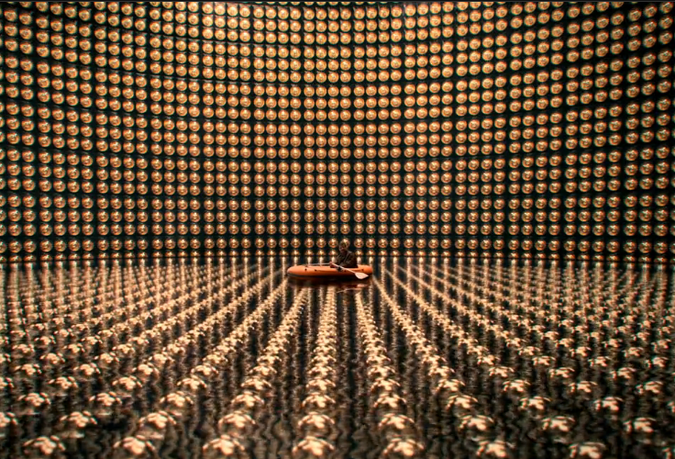
Neutrino Catcher
Super-Kamiokande Neutrino Catcher developed by the ICRR
Few interior typologies express the dramatic shift in the definitions of marketing, shopping, and luxury as well as the department store. The modern day department store formed its roots in England in the late 18th century. Many cite the Great Exhibition of 1851, located in Joseph Paxton’s Crystal Palace, as the largest source of inspiration for this rise in both display and consumerism within an interior environment. The department store preceded the modern day shopping mall as a large public space that, in many ways, replaced the town square as urban areas became more spread out and public spaces more sparse. Entering the 20th century, these structures began to offer more activities than just shopping: design services, cinemas, exhibitions, and even performances.
Towards the mid to late 19th century following the industrial revolution, France also made major moves in developing grand structures of their own. Paris’ main department stores (Bon Marche, La Samaritaine, Printemps) emerged from what was known as a novelty store (See entry on Au Bon Marche) or magasin de nouveautés. These stores quickly became symbols of a new era rich with improved technologies, social structures, and the rise of a service driven, consumerist society. The monumental glass and steel architecture of these buildings psychically embodied these social changes. Rather than being seen as a means to obtain necessities, shopping was now looked at as an exciting social activity for a wider range of people, not just the upper classes.
While some of the stores shown in this collection are no longer in operation, some still play a critical role in consumer life in Paris. The intersection of art and fashion design is a key characteristic in the store’s present-day operations. Le Bon Marche continues its legacy of design and display by incorporating an extensive art collection within its store. By engaging with emerging artists their goal is to create a constant dialog between “curiosity, a love of beauty and a taste for discovery”.* Galeries Lafayette has also adapted a similar approach by creating Galerie des Galeries, a free-entry art gallery dedicated to exploring the cross-over between art, fashion, and design.
This collection explores a breadth of department stores located in Paris over the centuries, zooming into some of the smallest interiors (window displays, furniture exhibitions) to the grandest structures (staircases, domes, art deco facades). Using the photographic work of Therese Bonney* as a starting point, the collection explores historic images of display during the 1920s as well as modern and contemporary states of some of the major department stores in Paris.
* https://library.si.edu/image-gallery/collection/th%C3%A9r%C3%A8se-bonney-photographs
*https://www.lvmh.com/houses/selective-retailing/le-bon-marche/